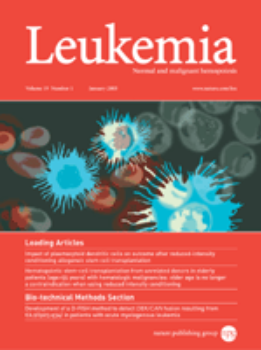Epitranscriptomic advances in normal and malignant hematopoiesis.
IF 13.4
1区 医学
Q1 HEMATOLOGY
引用次数: 0
Abstract
RNA modifications, collectively termed the epitranscriptome, constitute a dynamic layer of post-transcriptional regulation that governs RNA splicing, stability, localization, translation, and decay. In the hematopoietic system, these chemical marks influence stem cell fate, lineage specification, immune surveillance, and malignant transformation through context-dependent regulation of mRNA, tRNA, rRNA, and non-coding RNAs. Here, we focus on RNA modifications and editing events with emerging mechanistic and translational relevance in normal and malignant hematopoiesis, highlighting those implicated in stem cell dynamics, leukemic progression, and therapeutic resistance. Specifically, we discuss N⁶-methyladenosine (m⁶A), 5-methylcytosine (m⁵C), N⁷-methylguanosine (m⁷G), N⁴-acetylcytidine (ac⁴C), pseudouridine (Ψ), adenosine-to-inosine (A-to-I) editing, and RNA glycosylation. Particular attention is given to enzymes such as METTL3, METTL1, ADAR1, and NAT10, whose dysregulation sustains leukemic stem cell programmes, promotes immune evasion, and confers treatment resistance. With the first-in-class METTL3 inhibitor STC-15 now in early-phase clinical trials in solid tumours (NCT05584111, NCT06975293), and additional RNA-modifying enzyme inhibitors advancing preclinically, these pathways are emerging as therapeutically tractable, including in hematological cancers. Furthermore, integrating epitranscriptomic profiles into genomic risk frameworks may also improve disease stratification, minimal residual disease (MRD) monitoring, and the identification of targetable vulnerabilities. Together, these insights position RNA modifications as central to blood cancer biology and support their integration into next-generation diagnostic, prognostic, and therapeutic strategies.正常和恶性造血的表转录组学进展。
RNA修饰,统称为表转录组,构成了一个动态的转录后调控层,控制着RNA剪接、稳定性、定位、翻译和衰变。在造血系统中,这些化学标记通过mRNA、tRNA、rRNA和非编码rna的上下文依赖性调节,影响干细胞命运、谱系规范、免疫监视和恶性转化。在这里,我们专注于正常和恶性造血中具有新兴机制和翻译相关性的RNA修饰和编辑事件,强调那些与干细胞动力学、白血病进展和治疗耐药性有关的事件。具体来说,我们讨论了N⁶-甲基腺苷(m⁶A)、5-甲基胞嘧啶(m 5 . C)、N⁷-甲基鸟苷(m⁷G)、N⁴-乙酰胞苷(ac⁴C)、假尿嘧啶(Ψ)、腺苷-肌苷(A-to- i)编辑和RNA糖基化。我们特别关注METTL3、METTL1、ADAR1和NAT10等酶,它们的失调维持了白血病干细胞程序,促进了免疫逃避,并赋予治疗耐药性。随着METTL3抑制剂STC-15在实体瘤(NCT05584111, NCT06975293)的早期临床试验,以及其他rna修饰酶抑制剂在临床前的进展,这些途径正在成为可治疗的途径,包括血液系统癌症。此外,将表转录组谱整合到基因组风险框架中还可以改善疾病分层、最小残留疾病(MRD)监测和可靶向脆弱性的识别。总之,这些见解将RNA修饰定位为血癌生物学的核心,并支持将其整合到下一代诊断、预后和治疗策略中。
本文章由计算机程序翻译,如有差异,请以英文原文为准。
求助全文
约1分钟内获得全文
求助全文
来源期刊

Leukemia
医学-血液学
CiteScore
18.10
自引率
3.50%
发文量
270
审稿时长
3-6 weeks
期刊介绍:
Title: Leukemia
Journal Overview:
Publishes high-quality, peer-reviewed research
Covers all aspects of research and treatment of leukemia and allied diseases
Includes studies of normal hemopoiesis due to comparative relevance
Topics of Interest:
Oncogenes
Growth factors
Stem cells
Leukemia genomics
Cell cycle
Signal transduction
Molecular targets for therapy
And more
Content Types:
Original research articles
Reviews
Letters
Correspondence
Comments elaborating on significant advances and covering topical issues
 求助内容:
求助内容: 应助结果提醒方式:
应助结果提醒方式:


